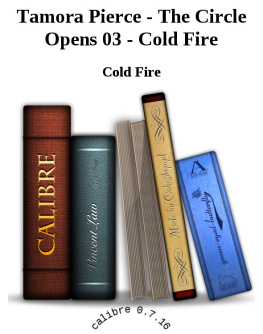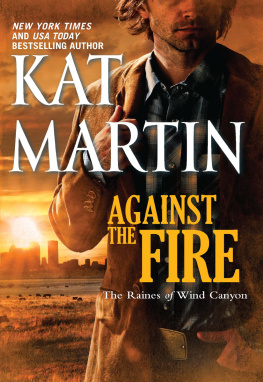LITERARY CRITICISM AND
CULTURAL THEORY
Edited by
William E. Cain
Professor of English
Wellesley College
A ROUTLEDGE SERIES
Literary Criticism and Cultural Theory
WILLIAM E. CAIN, General Editor
OVERHEARD VOICES
Address and Subjectivity in Postmodern American Poetry
Ann Keniston
MUSEUM MEDIATIONS
Reframing Ekphrasis in Contemporary American Poetry
Barbara K. Fischer
THE POLITICS OF MELANCHOLY FROM SPENSER TO MILTON
Adam H. Kitzes
URBAN REVELATIONS
Images of Ruin in the American City, 17901860
Donald J. McNutt
POSTMODERNISM AND ITS OTHERS
The Fiction of Ishmael Reed, Kathy Acker, and Don DeLillo
Jeffrey Ebbesen
DIFFERENT DISPATCHES
Journalism in American Modernist Prose
David T. Humphries
DIVERGENT VISIONS, CONTESTED SPACES
The Early United States through the Lens of Travel
Jeffrey Hotz
LIKE PARCHMENT IN THE FIRE
Literature and Radicalism in the English Civil War
Prasanta Chakravarty
BETWEEN THE ANGLE AND THE CURVE
Mapping Gender, Race, Space, and Identity in Willa Cather and Toni Morrison
Danielle Russell
RHIZOSPHERE
Gilles Deleuze and the Minor American Writings of William James, W.E.B. Du Bois, Gertrude Stein, Jean Toomer, and William Faulkner
Mary F. Zamberlin
THE SPELL CAST BY REMAINS
The Myth of Wilderness in Modern American Literature
Patricia A. Ross
STRANGE CASES
The Medical Case History and the British Novel
Jason Daniel Tougaw
REVISITING VIETNAM
Memoirs, Memorials, Museums
Julia Bleakney
EQUITY IN ENGLISH RENAISSANCE LITERATURE
Thomas More and Edmund Spenser
Andrew J. Majeske
YOU FACTORY FOLKS WHO SING THIS RHYME WILL SURELY UNDERSTAND
Culture, Ideology, and Action in the Gastonia Novels of Myra Page, Grace Lumpkin, and Olive Dargan
Wes Mantooth
VISIONARY DREARINESS
Readings in Romanticisms Quotidian Sublime
Markus Poetzsch
FIGHTING THE FLAMES
The Spectacular Performance of Fire at Coney Island
Lynn Kathleen Sally
Fighting the Flames
The Spectacular Performance of Fire at Coney Island
Lynn Kathleen Sally
Routledge
New York & London
Routledge
Taylor & Francis Group
270 Madison Avenue
New York, NY 10016
Routledge
Taylor & Francis Group
2 Park Square
Milton Park, Abingdon
Oxon OX14 4RN
2006 by Taylor & Francis Group, LLC
Routledge is an imprint of Taylor & Francis Group, an Informa business
Printed in the United States of America on acid-free paper
10 9 8 7 6 5 4 3 2 1
International Standard Book Number-10:0-415-97759-2 (Hardcover)
International Standard Book Number-13: 978-0-415-97759-3 (Hardcover)
No part of this book may be reprinted, reproduced, transmitted, or utilized in any form by any electronic, mechanical, or other means, now known or hereafter invented, including photocopying, microfilming, and recording, or in any information storage or retrieval system, without written permission from the publishers.
Trademark Notice : Product or corporate names may be trademarks or registered trademarks, and are used only for identification and explanation without intent to infringe.
Library of Congress Cataloging-in-Publication Data
Sally, Lynn.
Fighting the flames: the spectacular performance of fire at Coney Island / Lynn Kathleen Sally.
p. cm. -- (Literary criticism and cultural theory)
Includes bibliographical references and index.
ISBN 0-415-97759-2 (alk. paper)
1. Coney Island (New York, N.Y.)--History. 2. Fire--Exhibitions. 3. Fire extinction. 4. Fires--New York (State)--New York--History. I. Title. II. Series.
GV1853.C6S35 2006
974.7'23--dc22 2006014081
Visit the Taylor & Francis Web site at
http://www.taylorandfrancis.com
and the Routledge Web site at
http://www.routledge-ny.com
Dedicated to all who love Coney Island
Contents
Chapter One
Fighting Fire Fighters and the Public Performance of Heroism |
Chapter Two
Urban Fire: Tenement Houses and Coney Island as Prometheus |
Chapter Three
Fighting the Flames at Earl's Court and the Louisiana Purchase Exposition |
Chapter Four
Coney Island and Spectacle as Total-Body Experience |
Chapter Five
Fire and Flames and Fighting the Flames at Coney Island |
Conclusion
Creative Destruction and Elemental Performativity |
I came upon the subject of this book through an unlikely and circuitous route: a lascivious midget village. I had a vague recollection of reading or hearing about a village located in upstate New York around the turn of the twentieth century and that it was a constructed environment, designed in small proportions to entertain those that found such phenomena entertaining. What was more fascinating than the fact that someone would build a tiny village to house midgets as entertainment was the reputation the village had developed. Apparently, in their sexual practices the midgets had developed a free love philosophy. Rumor had it that after the last customer departed and they were left to their own devices, the midgets spent the evening indulging in promiscuous behaviortheir goblets overfilled with wine and their tiny limbs intertwineda stupendous bacchanalian celebration that lasted until the wee hours of the morning.
I decided that this lascivious midget village would be a fruitful research topic for a course I was taking as a second-year PhD student in the Performance Studies Department at New York University. Illegitimate midget babies were, to put it bluntly, sexy. I knew I was on to something good. I also knew that I had to locate some type of archive of the exhibit. I fantasized that an obscure collection of personal papers of one of the performers or producers existed at a research library of a liberal arts college tucked away in the woods in upstate New York and decided that that would make a picturesque destination for conducting primary research.
I quickly learned that my fantasies were precisely that: the midget village existed not in upstate New York but in Coney Islands Dreamland amusement park. I located information on the midget village, Lilliputia, but it became readily apparent that one of the most obviously sensational exhibits was one of the least spectacular things about Coney Island. Lore had it that the fire fighters of Lilliputias tiny fire department were the last ones left fighting the conflagration that leveled Dreamland to the ground in 1911. Another fire had already destroyed Steeplechase Park in 1907. Further research uncovered more fires from minor ones to major conflagrations. I began to wonder if it was divine intervention or just plain bad luck that Coney Island kept burning down. Coney, in all its architectural and technological glory, simply could not control the real fires that kept changing the landscape of the resort in unpredictable ways. And, in a spectacular collapse of the real and the fictional, while the amusement parks at Coney Island kept going up in flames, many of the exhibits within the parks consciously chose to place the destructive power of fire center stage.
Here began the sparks that would eventually develop into this book. I quickly became fascinated with not only fire-based disaster spectacles at Coney Island but with fire itself. I began to notice the ubiquity of fire, both in practice and as metaphor, in literature, mythology, religion, and even philosophy. While a sustained study of the ontology of fire will have to be the subject of another project, I came to realize that one of the innately spectacular things about fire is that it simultaneously embodies seeming opposites: it is both creative and destructive, archaic and modern; it extinguishes and sustains life. It is impossible to neatly contain and explain a phenomenon that is, by definition, uncontainable. Fire at Coney Island complicates this because it was placed within a theatrical setting that touted itself as real while fire also existed in the non-scripted real world as entertainment. I have developed the concept of elemental performativity to think through this seeming paradox and to help understand the levels of meaning produced from these exhibits and from fire itself.









